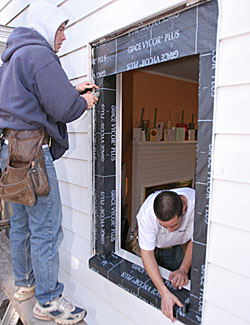Roof inspections are essential for identifying potential points and ensuring the longevity of your roof. Regular inspections may help detect problems early, preventing pricey repairs or replacements down the line. Here are some frequent methods and steps for conducting a roof inspection:
Visual Inspection:
a. Exterior Inspection:
Start by analyzing the roof from the bottom using binoculars or by safely climbing onto a ladder to get a closer look.
Look for seen signs of harm, corresponding to missing or damaged shingles, curling or buckling shingles, or unfastened or deteriorated flashing around roof penetrations.
Check for particles, moss, algae, or lichen development on the roof, which might indicate moisture-related issues.
https://roofrestorationcampbelltown.com.au/flashing-replacement/">read more and downspouts for granules from shingles, as extreme granule loss can sign shingle put on.
b. Interior Inspection:
Go into the attic or crawl house and examine the underside of the roof deck for signs of leaks, moisture, or water stains.
Look for daylight coming via cracks or holes in the roof deck, which can indicate roof injury.
Check for signs of insulation harm, mould, or mildew development, which might result from roof leaks.
Roof Walk:
a. If it is protected to take action, stroll on the roof surface to examine it up shut.
b. Be cautious and wear applicable security gear, similar to non-slip sneakers and a safety harness if wanted.
c. Look for any delicate or spongy areas, which might indicate underlying injury.
d. Check for unfastened or broken roofing materials, as well as signs of put on and tear and tear.
Moisture Detection:
a. Use a moisture meter to detect hidden moisture throughout the roof construction and insulation.
b. Moisture detection may help establish leaks or areas of potential water intrusion that will not be visible.
Drone Inspection:
a. Drones geared up with cameras can present a comprehensive view of the roof surface with out the necessity for direct physical entry.
b. A drone inspection may be especially useful for larger or hard-to-reach roofs.
Professional Inspection:
a. Consider hiring a professional roofing contractor or inspector to conduct an intensive inspection.
b. Professionals have the experience, tools, and expertise to identify issues that may not be obvious to a home-owner.

Documentation:
a. Document your findings with photographs and notes to create a document of the roof's condition.
b. This documentation may be useful for tracking changes over time and for insurance claims or repairs.
It's important to perform roof inspections frequently, ideally no much less than once a year, and after severe climate events like storms. Additionally, if you're not snug or assured in your capability to perform a roof inspection safely, it's advisable to hire a certified roofing skilled to ensure an intensive and correct evaluation of your roof's situation..
